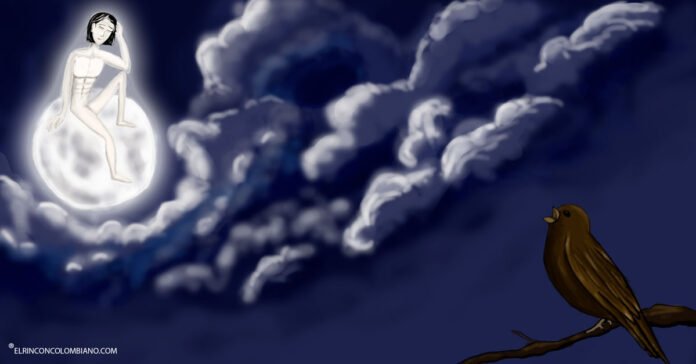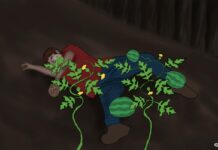The leyenda del tuhuayo (chotacabras o bujío) y la luna, es un relato que proviene de los pueblos indígenas uitoto que se ubican en los países de Perú y Colombia.
Según la leyenda durante las noches en donde la luna se deja ver con total claridad una particular ave se suele posar sobre las ramas y con gran furor empieza a cantar “¡Tuhuayo! ¡Tuhuayo!”.
This particular bird is the tuhuayo or nightjar as it is known in many countries. This bird sings that particular sound to the moon because it is desperately trying to get its attention, since the moon is its father.
(Read Also: Myth of the Origin of the Sun and the Moon according to the Arhuaco people)
It is said that a long time ago an old woman lived with her young goddaughter. During the nights the old woman began to notice how a strong and bright light was filtering through the window of her home into the goddaughter's room. Out of curiosity, the old woman watched the fourth and saw how the light transformed into a handsome young man.
With the intention of finding out who the young man was, the old woman took a fruit from her garden that usually leaves a black stain if it is smeared on the skin. She hid until the young man appeared and smeared it on his face before he disappeared. Next he searched throughout the town for the person with the black-stained face since he believed it was a young man who sneaked into the room with the use of magic, but he could not find him.
When night came, both the old woman and the entire town were amazed to see how dark spots began to appear on the moon, then she understood that that handsome young man was the moon.
(Read Also: Legend of the Forest Leafleaf)
That is why the nightjar (tuhuayo), which would have been born from the relationship of the moon and the old woman's goddaughter, fervently sings to her “I am your fruit!” “I am your fruit!” which is what “tuhuayo” means in the language of the Uitoto or Witotos (Quechua) indigenous communities and is also why from then on the moon has dark spots on itself.
Origin of the legend of the tuhuayo and the Moon
The legend has its origin in the Uitoto indigenous community, the Peruvian writer Francisco Izquierdo brings this legend to literature in the form of a story in the book “Tales of Uncle Doroteo de 1950”. The legend seeks to explain the origin of the spots on the moon and the particular song of the nightjar within the Uitoto community.
The scientific name of the American tuhuayo species is Nyctidromus albicollis of the Caprimulgidae family; Among the names by which this bird is usually known are: atajacaminos, tapacaminos, pauraque, gallinaciega, guardacaminos, among others depending on the country or region where it is found.
Other versions of the nightjar legend
It should be noted that there are several species of nightjars (tuhuayo) and due to their mysterious peculiarities, legends and myths have arisen in different parts of the world.
(Read Also: Legend of the Colombian Basilisk (güío or buío))
The very name “nightjar” arises from a European legend in which it is said that the European nightjar usually suckles from the udders of goats at night, especially on full moon nights.
Did you like this article? Leave your opinion in the comments and share this story with your friends and acquaintances so they can discover our unique stories.





